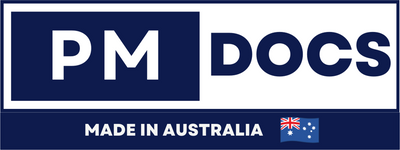Step-by-Step Guide To Achieving GDPR Toolkit Compliance In Australia
Introduction
Achieving compliance with data protection regulations such as the General Data Protection Regulation (GDPR) is crucial for businesses operating in Australia. With the increasing importance of data privacy and security, it is essential for organizations to understand and implement the necessary measures to protect personal data. This step-by-step guide will provide you with a comprehensive overview of the GDPR toolkit compliance requirements in Australia and how you can effectively navigate the regulatory landscape to ensure your organization is in full compliance.

Step-by-Step Guide To Achieving GDPR Toolkit Compliance In Australia
Here are the steps:
Step 1: Determine If GDPR Applies to Your Australian Business
The General Data Protection Regulation (GDPR) is a comprehensive data protection law in the European Union that affects businesses worldwide, including those based in Australia. Understanding whether GDPR applies to your Australian business is crucial to ensure compliance and avoid significant penalties. Here are the key points to help you determine applicability:
1. Assess Your Business Operations
-
Customer Base: Determine if your business offers goods or services to individuals in the EU, irrespective of whether payment is required.
- Monitoring Behavior: Consider if your business monitors the behavior of EU residents, such as tracking online activity or profiling to make contextual advertisements.
2. Identify Data Types
-
Personal Data Handling: Analyze the types of data your business collects. GDPR applies to any personal data pertaining to individuals within the EU, such as names, addresses, and online identifiers.
- Sensitive Data: Be aware that GDPR has stringent rules regarding special categories of data, including health information, racial or ethnic origin, and data relating to sexual orientation.
3. Geographical Scope of GDPR
- Establishment Criteria: Determine if your business has an establishment in the EU. The GDPR applies to organizations with a physical presence within EU member states.
- Consistent Interaction: If your business consistently interacts with EU customers, GDPR may apply regardless of the physical location of your business.
Step 2: Conduct A Data Audit And Mapping Exercise
Conducting a data audit and mapping exercise is a crucial part of managing data effectively within an organization. It helps to ensure that data is both accurate and accessible for decision-making.
Here are the key points to consider during this step:
1. Define Objectives
-
Establish Clear Goals: Determine what you aim to achieve with the data audit, such as improving data quality or enhancing accessibility.
- Align with Business Needs: Ensure the objectives resonate with organizational priorities and regulatory requirements.
2. Inventory Existing Data
-
Catalog Data Sources: Compile a comprehensive list of all data sources, including databases, spreadsheets, and third-party data.
- Include Formats and Locations: Note the format of the data (e.g., structured, unstructured) and where it is stored (e.g., cloud, on-premises).
3. Assess Data Quality
-
Evaluate Accuracy: Check the reliability and correctness of data across all sources.
- Identify Gaps and Redundancies: Look for missing information, duplicate entries, or outdated records that need updating or removal.
Step 3: Gap Analysis Between GDPR And Australian Privacy Law
As organizations strive to navigate the complex world of data protection, understanding the gaps between the General Data Protection Regulation (GDPR) and Australian Privacy Law is crucial. In this article, we will outline the key differences and similarities through a structured gap analysis approach.
1. Regulatory Scope
-
GDPR: Applies to all organizations operating within the EU, as well as any organization outside the EU offering goods or services to, or monitoring the behavior of, EU residents.
- Australian Privacy Law: Primarily applicable to organizations with an annual turnover of more than AUD 3 million, certain small businesses, and government agencies.
2. Consent Requirements
-
GDPR: Requires clear and affirmative consent from data subjects for processing their personal data, with the ability to withdraw consent at any time.
- Australian Privacy Law: While consent is encouraged, it is not strictly required in all circumstances, allowing for other lawful bases for data processing.
3. Data Subject Rights
-
GDPR: Grants extensive rights to data subjects, including the right to access, rectify, erase, restrict processing, data portability, and object to processing.
- Australian Privacy Law: Provides individuals with rights such as access to personal information but lacks provisions for erasure or data portability.
Step 4: Develop GDPR-Aligned Policies And Procedures
As organizations strive to comply with the General Data Protection Regulation (GDPR), the development of comprehensive policies and procedures is crucial. This step outlines the specific actions needed to create a framework that ensures personal data is handled in accordance with GDPR requirements. Here are the key elements to consider:
1. Conduct a Data Audit
- Identify and categorize all personal data held by the organization.
- Assess how data is collected, processed, stored, and disposed of.
- Evaluate data sharing practices with third parties.
2. Define Data Protection Roles
- Appoint a Data Protection Officer (DPO) if required.
- Assign roles and responsibilities related to data protection across the organization.
- Ensure that staff are aware of their data protection obligations.
3. Create Clear Data Retention Policies
- Establish guidelines for how long personal data will be retained.
- Implement processes for securely deleting data that is no longer needed.
- Ensure compliance with legal and regulatory requirements for data retention.
Step 5: Update Contracts and Agreements
Updating contracts and agreements is a crucial step in ensuring that all parties involved are protected and aware of their rights and obligations. Here are the key points to consider when updating these legal documents:
1. Review Existing Contracts
- Assess the current contracts to identify any outdated information or clauses.
- Pay attention to expiration dates and renewal terms that may need adjustment.
2. Assess Changes in Regulations
- Stay informed about any changes in local, state, or federal laws that could impact the terms of your agreements.
- Make necessary adjustments to ensure compliance with new regulations.
3. Incorporate Feedback from Stakeholders
- Gather input from all parties involved to understand their needs and concerns.
- Use this feedback to make contracts more equitable and comprehensive.
4. Update Terms and Conditions
- Revise any terms that don't align with current business practices or values.
- Ensure that payment terms, deliverables, and timelines are clear and up to date.
Step 6: Test, Monitor, And Audit Compliance
1. Define Compliance Metrics - Establish clear metrics and benchmarks to measure compliance performance. This enables the organization to quantify compliance levels and effectiveness.
2. Implement Continuous Monitoring Tools - Utilizing automated tools for ongoing monitoring can significantly increase efficiency. These tools can track compliance in real-time, providing immediate insights into any potential issues.
3. Conduct Regular Audits - Schedule audits at regular intervals to evaluate adherence to compliance requirements. This not only helps identify any lapses but also reinforces adherence among employees.
Conclusion
Achieving GDPR Toolkit compliance in Australia is not just a regulatory requirement; it is also a significant step towards fostering trust with clients and customers. By following this step-by-step guide, Australian businesses can ensure that they protect personal data effectively and mitigate the risks associated with data processing. Staying vigilant and adaptable to changes in data protection regulations will not only enhance compliance efforts but also position organisations as responsible stewards of personal data in an increasingly interconnected world.




